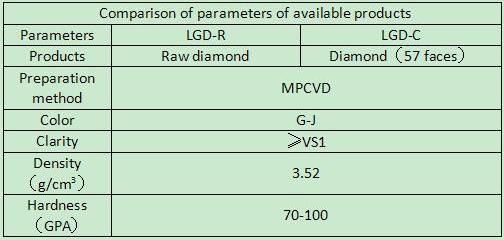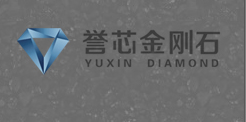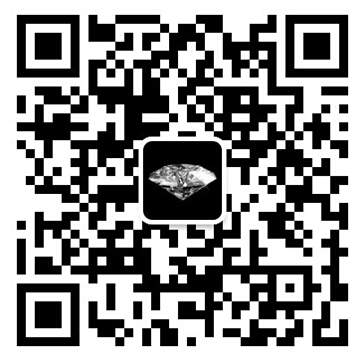Company tel:+86-379-63184520
Contact number:+86-15937921751
Postcode:471000
Email:info@yuxindiamond.com
Address:3-1-508 Luoyang National University Science Park, No. 2 Penglai Road, Jianxi District, Luoyang, China 471000
Impossible Things in Classical Thermodynamics
According to the China Science and Technology Daily this week, British quantum physicists are experimenting with artificial diamonds to try to prove a theory that was just a few years ago: Quantum propulsion can make the diamond's power output go above the classical thermodynamic limits.
Only reckless physicists dare to try to break the laws of thermodynamics. However, it turns out that there may really be a way to change these laws. In a lab at the University of Oxford in the UK, quantum physicists are trying to use a small piece of artificial diamond to do this. At first, the diamond, inundated with messy fibers and mirrors, was barely visible. However, when the researchers turned on the green laser, the defects in the diamond were illuminated and the crystals started to emit red light.
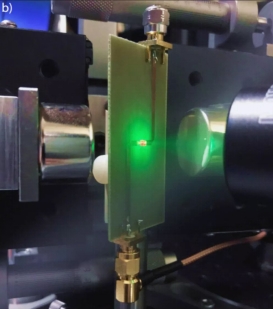
In this beam of light, scientists have found preliminary evidence of the theoretical effect just a few years ago: Quantum propulsion can make the power output of diamonds go beyond the classical thermodynamic limits. If the conclusions hold, they will bring tangible benefits to quantum thermodynamics. Quantum thermodynamics is a relatively new field that aims to reveal the laws governing the flow of heat and energy at the atomic scale.
The development of classical laws of thermodynamics dates back to the 19th century. They were born out of the effort to understand the steam engine and other macroscopic systems. Thermodynamic variables such as temperature, heat, etc. are statistical in nature and are defined by the average motion of large particle swarms. But back in the 1980s, Ronnie Kosloff, an early pioneer in the field and a researcher at Hebrew University in Israel, began to wonder if this situation still works for much smaller systems.
In the quantum field, it is believed that the laws of quantum thermodynamics are different from the classical theories based on the behavior of most particles, and many quantum thermodynamics hope to find something other than traditional thermodynamics that may be suitable for practical purposes, including improving laboratory-based refrigeration technology to create battery with enhanced capabilities and refined quantum computing technology. If the results of this experiment are valid, they will be a major breakthrough in quantum thermodynamics.
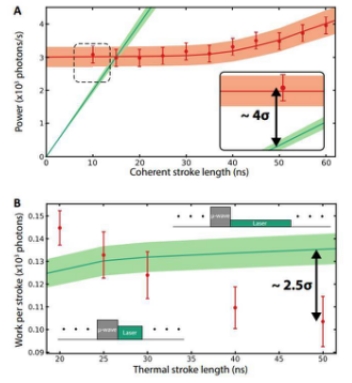
Such a diamond experiment was first proposed by Ronnie Kosloff, Raam Uzdin, and Amikam Levy, also from Hebrew University. According to their hypothesis, the nitrogen atoms scattered in diamonds can be used as a heat engine to contact with the high-temperature source (in this experiment, the laser) to realize the electronic excitation transition and release the photon energy. Photons can be excited by both laser and microwave radiation, but Kosloff and his colleagues are even more excited by the fact that such "engines" can operate in an enhanced mode that improves thermodynamic performance through quantum effects.
In this experiment, researchers at the University of Oxford, inspired by the above notion, studied diamond heat engine experiments with quantum effects (coherence) using pulsed and microwave radiation to obtain some electrons by pulsed laser rather than continuous light superposition state, combined with microwave radiation allows the crystal to emit photons faster.
The researchers used diamonds with nitrogen vacancy defects to investigate the comparison of two types of quantum heat engines with classical heat engines that do not have quantum effects. Finally, they found that the measured output power was four standard deviations above the output power of a typical heat engine, breaking the limits of classical theory.
They also noticed that when the coherence diminished, the output power was reduced below the classical limit, indicating that the quantum effect favored the increase of heat engine power and also demonstrated the positive effect of the quantum effect on the application.
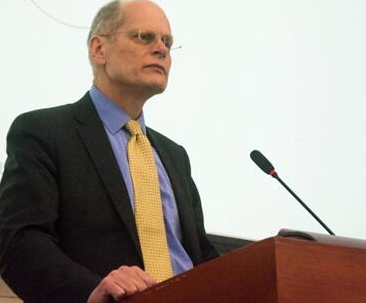
Leadership in the diamond testing laboratory at Oxford University's Ian Walmsley also cautious about the future of the field. Although Walmsley and other experimenters have been drawn to quantum thermodynamics in recent years, he said their interest is "opportunistic" to a large extent. They found the opportunity to conduct relatively quick and simple trials with devices that have been installed successfully for other uses. For example, diamond defect testing devices have been widely used to study quantum computing and sensor applications. Walmsley believes that the current quantum thermodynamics is booming. "But whether it can continue to thrive or end up with nothing, we'll see."
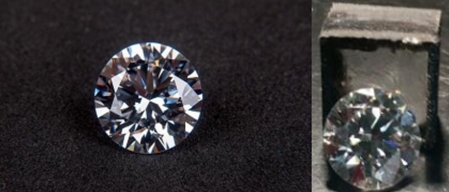
With the improvement of CVD synthesis technology, through the adoption of gas raw material (hydrogen, methane), Luoyang Yuxin Diamond Co., Ltd gets the completely transparent and colorless large size diamond single crystal under less than one air pressure, the temperature of 800-1200℃ by epitaxial growth way, its composition, hardness, density, etc. are basically identical with natural diamond, but the price is much lower than that of natural diamond; different from the method of high temperature and high pressure (HTHP), CVD artificial synthetic technique does not need to use the catalyst, and puts an end to forming metal inclusions, cracks, holes, etc. in the production.
Features: after polishing, the clarity is commonly VVS and above level, color chromaticity of D-J.
We can provide raw diamond at carat level.
